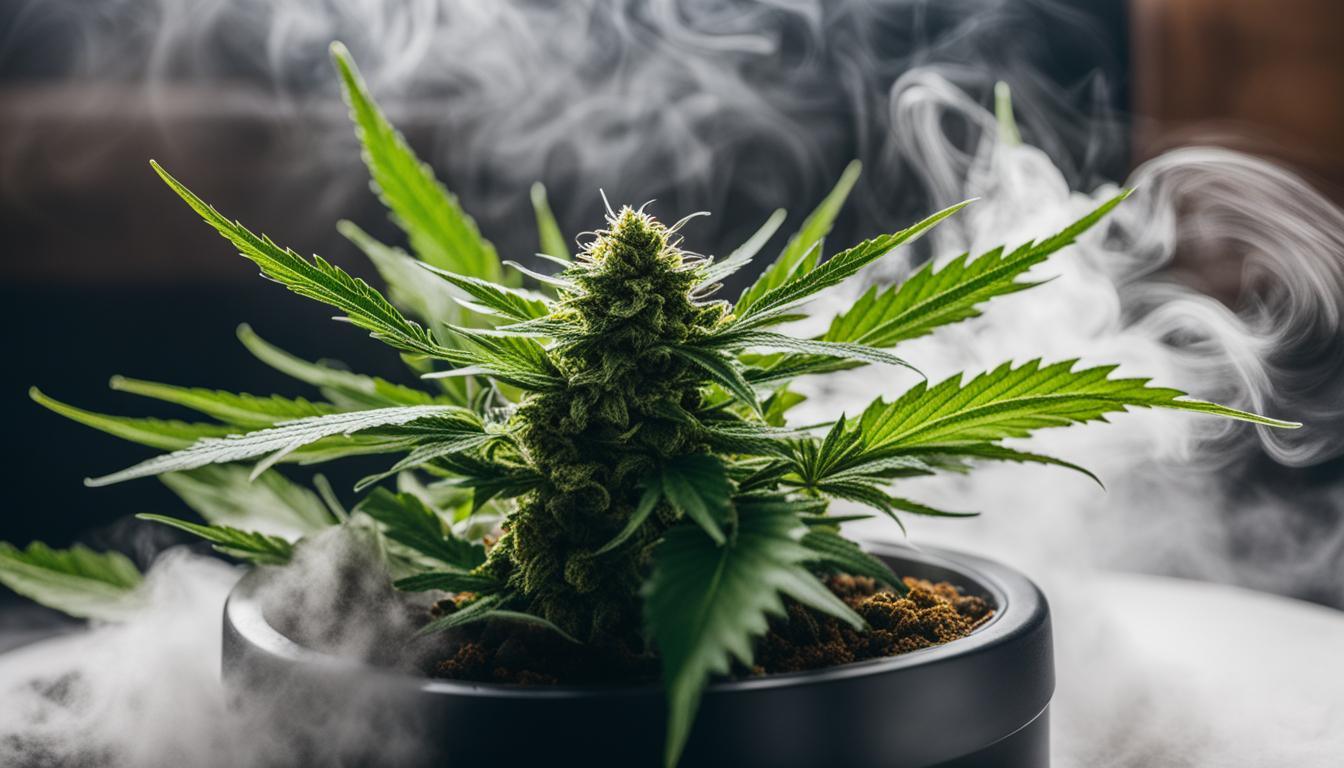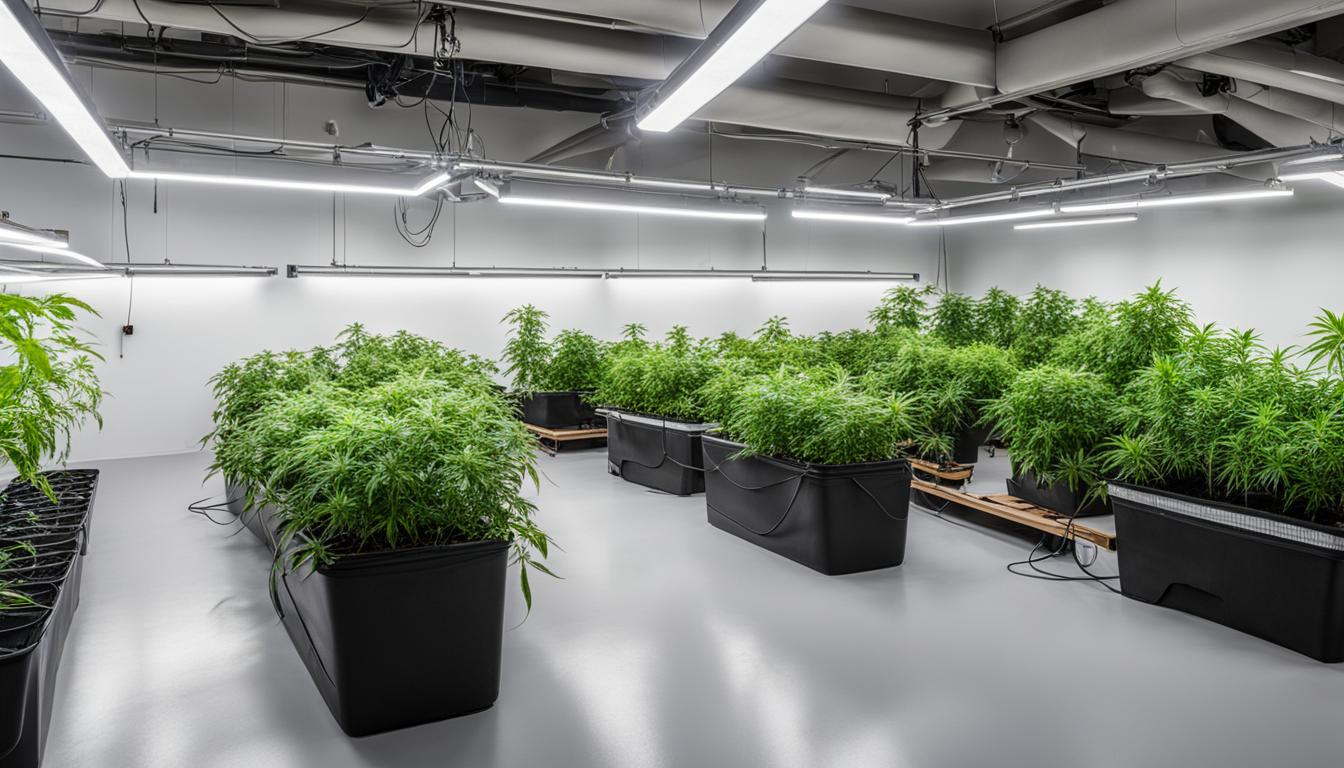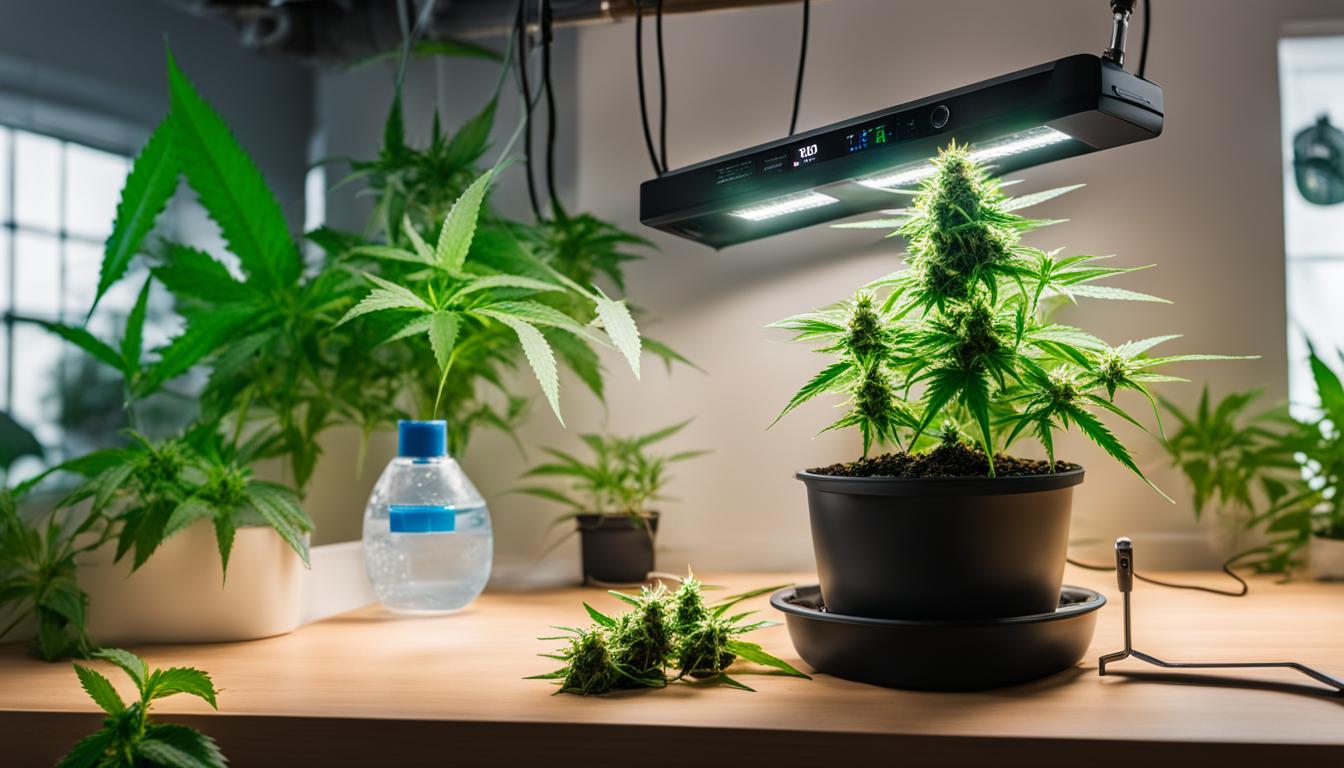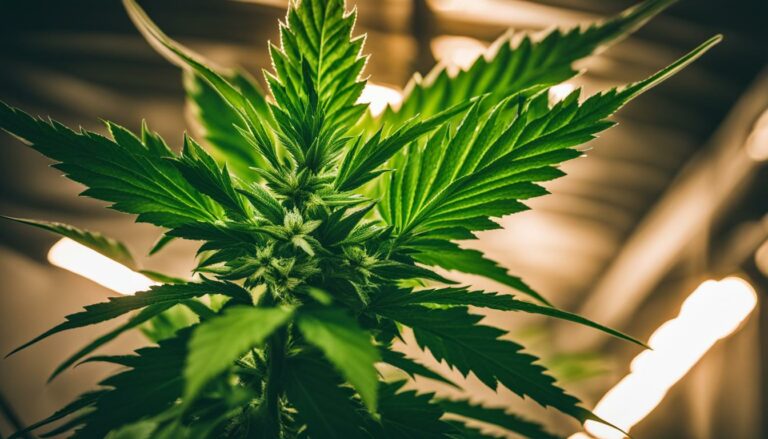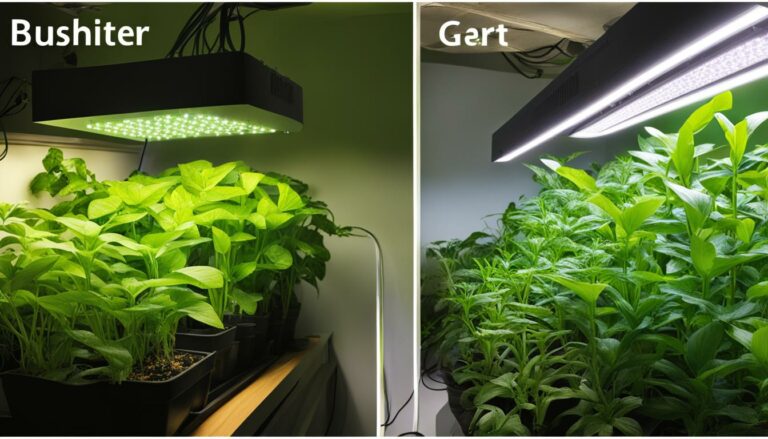Controlling Humidity in Your Cannabis Grow Room
Proper humidity control is the key to successful cannabis cultivation. Maintaining optimal cannabis humidity levels is essential for healthy plant growth and maximizing yield. In this article, we will explore the importance of controlling humidity for cannabis and provide valuable tips to help you achieve optimal conditions.
Whether you are a seasoned grower or just starting out, understanding the optimal humidity for cannabis is crucial. By controlling humidity, you can prevent mold contamination, ensure proper drying and curing, and create an ideal environment for your plants to thrive.
Throughout the article, we will delve into the different stages of cannabis growth and their specific humidity requirements. We will also discuss common issues that may arise from improper humidity control and provide practical solutions to overcome them.
Additionally, we will explore the connection between temperature and humidity in cannabis cultivation, as well as how to monitor and measure humidity levels in your grow room effectively.
Are you ready to take your cannabis cultivation to the next level? Join us as we uncover the secrets to controlling humidity for cannabis and unlock the full potential of your grow room!
The Importance of Humidity in Cannabis Growing
Cannabis growing is a delicate process that requires careful attention to various environmental factors. One crucial factor that significantly impacts the health and growth of cannabis plants is humidity. Maintaining the right humidity levels throughout the different stages of cultivation is essential for the optimal development of the plants.
High humidity levels in the growing environment can result in excessive moisture, which can lead to mold contamination and other issues. On the other hand, low humidity levels can cause the plants to lose more water than they can retain, leading to dehydration and cell death. To ensure healthy growth, maintaining the appropriate humidity range is crucial.
In the early stages of cannabis growth, such as the seedling and vegetation stages, higher humidity levels of around 40-70% are recommended to promote root growth and overall plant development. However, as the plants enter the flowering stage, humidity levels should be gradually reduced to prevent mold and bud rot. Ideally, humidity levels of 30-50% are suitable for the late flowering stage.
Controlling and maintaining humidity in the cannabis grow room can be achieved through various methods, such as using humidifiers or dehumidifiers, improving ventilation, and sealing the room properly. Regular monitoring of humidity levels using a hygrometer is necessary to ensure that the plants are provided with the ideal growing conditions they need for healthy and successful cultivation.
Table: Recommended Humidity Levels for Cannabis Growing
| Growth Stage | Optimal Humidity Range |
|---|---|
| Seedling | 40-70% |
| Vegetation | 40-70% |
| Early Flowering | 40-50% |
| Late Flowering | 30-50% |
The Drying Process for Cannabis
The drying process is a critical step in cannabis cultivation. Proper drying and curing are essential for producing high-quality cannabis with optimal potency, flavor, and aroma. During the drying process, excess moisture is removed from the harvested plants to prevent mold and ensure a smooth curing process.
There are two primary methods of trimming cannabis during the drying process: wet trimming and dry trimming. Wet trimming involves trimming the plants immediately after they are harvested and starting the drying process right away. This method is preferred by some growers as it allows for easier handling of the plants and reduces the risk of mold growth during drying. Dry trimming, on the other hand, involves hanging the branches of the harvested plants to dry before trimming. This method is often used by growers with a larger amount of plant matter to trim.
Regardless of the trimming method used, it is crucial to maintain suitable drying room conditions. The drying room should have a temperature range of 59-71°F and humidity levels at or near 50%. These conditions promote a slow and controlled drying process, allowing the cannabis to cure properly and develop its desired characteristics. Monitoring temperature and humidity levels using a hygrometer is recommended to ensure optimal drying conditions.
| Drying Process | Temperature Range | Humidity Levels |
|---|---|---|
| Wet Trimming | 59-71°F | 50% |
| Dry Trimming | 59-71°F | 50% |
Humidity Levels for Each Stage of Growth
Proper humidity control is essential for the successful cultivation of cannabis plants at every stage of growth. Different stages of growth require specific humidity levels to ensure optimal plant health and development. By understanding the ideal humidity ranges for each stage, cannabis growers can create the ideal growing environment and maximize their yields.
Seedling Stage
During the seedling stage, cannabis plants are delicate and require high humidity levels to establish healthy root growth. Aim for humidity levels between 65-70% to create a humid environment that promotes root development and reduces the risk of seedling dehydration. Maintaining consistent humidity in this stage is crucial for setting a strong foundation for the plants’ future growth.
Vegetation Stage
As cannabis plants transition from the seedling stage to the vegetation stage, moderate to high humidity levels are recommended. Aim for humidity levels between 40-70% during this stage to support vigorous vegetative growth and maintain healthy foliage. Higher humidity levels can help plants take in more nutrients through their leaves, leading to lush and vibrant growth.
Early Flowering Stage
During the early flowering stage, it is important to lower humidity levels to prevent the development of mold and mildew. Aim for humidity levels between 40-50% to minimize the risk of moisture-related issues. This stage is critical for bud development, and controlling humidity levels is crucial to ensure the overall quality of the flowers.
Late Flowering Stage
In the late flowering stage, it is essential to maintain low humidity levels to prevent bud rot and maximize yields. Aim for humidity levels between 30-40% to create a drier environment that discourages the growth of mold and fungi. Lower humidity levels also help the plants allocate more energy towards bud production, resulting in larger and denser flowers.
| Stage of Growth | Ideal Humidity Range |
|---|---|
| Seedling | 65-70% |
| Vegetation | 40-70% |
| Early Flowering | 40-50% |
| Late Flowering | 30-40% |
Tips for Controlling Humidity in Your Cannabis Grow Room
Controlling humidity in your cannabis grow room is crucial for maintaining optimal growing conditions and ensuring the health and productivity of your plants. Here are some useful tips to help you control humidity effectively:
1. Use a Humidifier or Dehumidifier
Investing in a humidifier or dehumidifier can be a game-changer when it comes to controlling humidity levels in your grow room. A humidifier can help increase humidity if it’s too low, while a dehumidifier can remove excess moisture from the air if it’s too high. These devices are equipped with adjustable settings, allowing you to fine-tune the humidity levels according to the specific needs of your cannabis plants.
2. Improve Ventilation
Proper ventilation is essential for maintaining ideal humidity levels in your grow room. Good airflow helps prevent stagnant air and promotes the circulation of fresh air. Increasing the power of your exhaust fan and strategically placing oscillating fans can help improve ventilation and reduce humidity levels. Additionally, installing intake vents can bring in fresh air and aid in regulating humidity.
3. Manage Watering Techniques
Watering techniques play a significant role in controlling humidity levels. While it’s important to keep cannabis plants adequately hydrated, overwatering can lead to excessive humidity. Ensure proper drainage by using well-draining soil and pots with sufficient drainage holes. By allowing excess water to escape, you can prevent water accumulation and subsequent humidity buildup.
4. Seal and Insulate the Grow Room
Ensuring that your grow room is properly sealed and insulated can help maintain consistent humidity levels. Seal any gaps or cracks in walls, windows, and doors to prevent the ingress of outside air and humidity. Insulation can also help regulate temperature and humidity by minimizing heat exchange with the surrounding environment.
5. Defoliate as Needed
Excessive foliage can contribute to higher humidity levels in your grow room. Regularly defoliating your cannabis plants by removing excess leaves can help control humidity by reducing transpiration. This allows for better air circulation and prevents excessive moisture evaporation from the leaves.
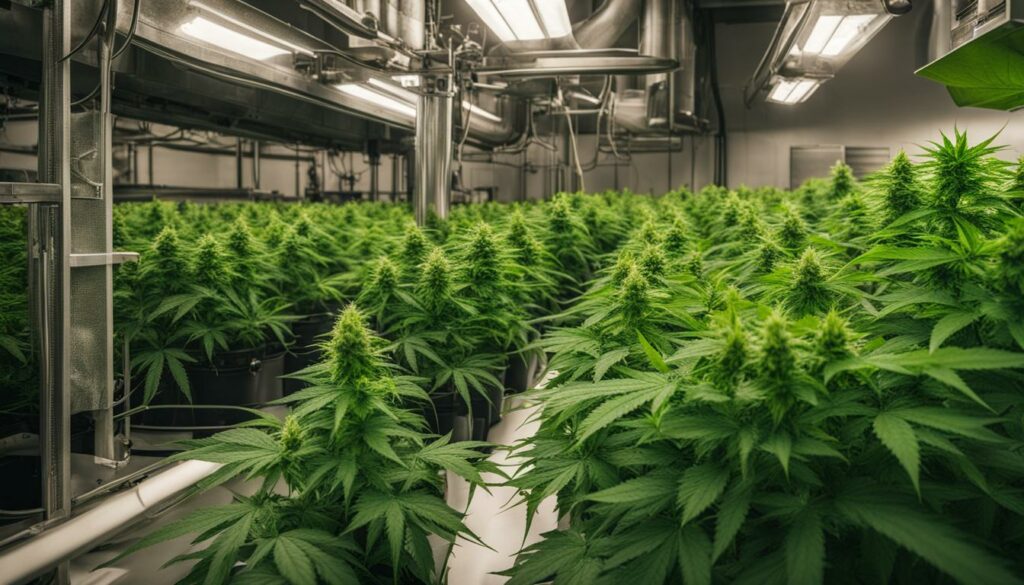
| Tips for Controlling Humidity | Effectiveness |
|---|---|
| Use a humidifier or dehumidifier | Highly effective in adjusting humidity levels |
| Improve ventilation | Significantly reduces humidity through better airflow |
| Manage watering techniques | Prevents excess water accumulation and subsequent humidity buildup |
| Seal and insulate the grow room | Maintains consistent humidity levels by minimizing outside air ingress |
| Defoliate as needed | Reduces humidity by improving air circulation around the plants |
The Connection Between Temperature and Humidity
When it comes to cannabis cultivation, maintaining the right balance between temperature and humidity is crucial. These two factors are interconnected and can significantly impact the overall health and growth of your plants. Understanding the relationship between temperature and humidity can help you create the optimal environment for successful cannabis cultivation.
Temperature plays a vital role in determining the moisture content in the air. Higher temperatures have the capacity to hold more humidity, while colder temperatures result in lower humidity levels. For cannabis plants, it’s essential to maintain the appropriate temperature and relative humidity levels to create an ideal growing environment.
Monitoring and controlling temperature and humidity go hand in hand. By using a hygrometer and thermometer, you can accurately measure and track these factors in your grow room. This will enable you to make necessary adjustments to maintain a balanced environment for your cannabis plants.
Remember that each stage of growth requires different temperature and humidity levels. For example, during the seedling stage, higher humidity levels of around 65-70% are needed to promote root growth. As the plants enter the flowering stage, lower humidity levels of 30-40% are necessary to prevent bud rot and improve yield. By closely monitoring and adjusting temperature and humidity throughout the cultivation process, you can ensure optimal growth and maximize your harvest.
Benefits of Maintaining Temperature and Humidity
“Maintaining the right balance between temperature and humidity is essential for successful cannabis cultivation. By controlling these factors, growers can optimize plant health, prevent mold and bud rot, and ultimately improve the quality and yield of their harvests.”
| Benefit | Explanation |
|---|---|
| Optimal Plant Health | By providing the right temperature and humidity conditions, you can ensure that your cannabis plants thrive and remain healthy throughout their growth cycle. This includes promoting proper root development, preventing stress, and reducing the risk of disease. |
| Mold and Bud Rot Prevention | Controlling humidity levels is crucial for preventing mold and bud rot, which can be detrimental to your cannabis plants. High humidity can create a favorable environment for mold growth, while low humidity can lead to bud rot. Maintaining the right balance is essential for keeping your plants mold-free. |
| Improved Yield and Quality | By maintaining optimal temperature and humidity levels, you can enhance the overall yield and quality of your cannabis harvest. The right conditions promote healthy growth, resin production, and terpene development, resulting in potent and flavorful buds. |
The Common Issues with Humidity Control in Cannabis Growing
Humidity control is a crucial aspect of cannabis cultivation, but it can also present various challenges for growers. Understanding and addressing these common issues is essential for maintaining optimal conditions and ensuring the health and productivity of your plants.
Potential Issues
One of the most prevalent problems associated with humidity control in cannabis growing is the development of white powdery mildew. This fungal disease thrives in high humidity environments and can quickly spread, damaging the plants and impacting their overall yield. Additionally, excess moisture can lead to bud mold or rot, especially during the late flowering stage. These conditions provide a breeding ground for harmful fungi that can destroy your crop. Another issue that can arise from improper humidity control is nutrient deficiencies. When humidity levels are too low, plants may not receive enough water, resulting in nutrient imbalances and stunted growth.
Solutions and Prevention
To combat these issues, it is essential to maintain appropriate humidity levels throughout the different stages of cannabis growth. Investing in a reliable dehumidifier or humidifier can help regulate moisture in the grow room. Improving ventilation, such as upgrading your exhaust fan or adding additional fans, can also help reduce humidity. It is important to monitor and adjust humidity levels regularly using a hygrometer. Additionally, implementing good cultivation practices, such as defoliating to reduce humidity, can help prevent these issues from occurring. Taking proactive measures to maintain optimal humidity levels will significantly contribute to the success of your cannabis crop.
Summary
Controlling humidity in cannabis growing is a challenging task, but with proper knowledge and preventive measures, these issues can be overcome. By addressing common problems such as white powdery mildew, bud mold or rot, and nutrient deficiencies, growers can ensure the health and productivity of their plants. Regular monitoring, using appropriate equipment, and implementing best practices are key to maintaining optimal humidity levels throughout the growing process.
How to Monitor and Measure Humidity in Your Cannabis Grow Room
Monitoring and measuring humidity in your cannabis grow room is crucial for maintaining optimal conditions and ensuring the success of your cultivation. By understanding the importance of humidity control and utilizing the right tools, you can create an environment that promotes healthy plant growth and maximizes your yield. Read on to discover effective methods for monitoring and measuring humidity in your cannabis grow room.
Using a Hygrometer
One of the most reliable ways to measure humidity in your grow room is by using a hygrometer. A hygrometer is a device that measures relative humidity in the air. It provides accurate readings of the moisture content, allowing you to adjust humidity levels accordingly. Look for a hygrometer that also measures temperature and dew point to gain a comprehensive understanding of your growing environment.
Place the hygrometer at plant level to obtain the most accurate readings. Regularly check the humidity levels displayed on the hygrometer and make adjustments as needed to maintain optimal conditions for your cannabis plants.
Monitoring Techniques
In addition to using a hygrometer, there are other techniques you can employ to monitor humidity in your cannabis grow room. These include:
- Regularly checking the leaves and plant surfaces for signs of moisture or condensation
- Observing the behavior of your plants – drooping leaves may indicate high humidity, while crispy leaves may indicate low humidity
- Using a digital data logger to track humidity levels over a period of time
By implementing these monitoring techniques, you can gain valuable insights into the humidity levels of your grow room and ensure optimal conditions for your cannabis plants.
| Advantages of Monitoring Humidity | Disadvantages of Neglecting Humidity |
|---|---|
| Prevents mold growth | Risk of mold contamination |
| Promotes healthy plant growth | Decreased plant health and vitality |
| Maximizes yield and potency | Reduced yield and potency |
Related Articles
- How to Control Humidity Levels in Indoor Cannabis Grows?
- What Are the Ideal Humidity Levels for Cannabis at Different Growth Stages?
- How Does Humidity Affect Cannabis Plant Health and Bud Quality?
- What Are the Best Dehumidifiers for Cannabis Grow Rooms?
- How to Manage Humidity in Large Scale Cannabis Cultivation Facilities?
Conclusion
Proper humidity control is vital for successful cannabis cultivation. By understanding the importance of humidity and following the right techniques, growers can optimize their yield and ensure the health of their plants.
One of the key tips for humidity control in cannabis cultivation is to maintain different humidity levels for each stage of growth. From high humidity during the seedling stage to lower humidity in the late flowering stage, providing the right moisture content is crucial for plant development.
Regular monitoring and adjustment of humidity levels using a hygrometer is essential. This allows growers to maintain the ideal conditions for their plants, preventing issues such as mold growth and nutrient deficiencies.
By implementing these humidity control tips, cannabis growers can create an optimal environment for their plants to thrive. With proper humidity control, they can achieve healthier plants, higher yields, and ultimately, success in their cannabis cultivation endeavors.
FAQ
Why is humidity control important in cannabis growing?
Humidity control is crucial in cannabis growing as it affects moisture content in the plants. Improper humidity levels can lead to cell death, mold contamination, and nutrient deficiencies.
What are the different methods of trimming cannabis during the curing process?
Wet trimming involves trimming the plants as soon as they are ripe and starting the drying process immediately. Dry trimming involves hanging the branches to dry before trimming.
What are the recommended humidity levels for each stage of cannabis growth?
During the seedling stage, high humidity levels of around 65-70% are needed. In the vegetation stage, moderate to high humidity levels of 40-70% are recommended. In the early flowering stage, low humidity levels of 40-50% are necessary. In the late flowering stage, humidity levels should be kept low at around 30-40%.
How can I control humidity in my cannabis grow room?
Adding a humidifier or dehumidifier, improving ventilation, increasing the power of the exhaust fan, keeping soil surfaces moist or improving drainage, sealing and insulating the grow room, and defoliating can all help control humidity levels.
What is the relationship between temperature and humidity in cannabis cultivation?
Higher temperatures can hold more humidity, while colder temperatures have lower humidity levels. Maintaining the appropriate temperature while monitoring humidity is important for optimal cannabis growth.
What are the common issues that can arise from improper humidity control in cannabis growing?
Common issues include white powdery mildew, bud mold or rot, and nutrient deficiencies. These problems can occur due to high humidity environments or low humidity levels.
How can I monitor and measure humidity in my cannabis grow room?
Using a hygrometer that measures relative humidity, temperature, and dew point can provide accurate readings of the moisture content in the air. Regularly checking humidity levels and adjusting as needed is crucial for successful cannabis cultivation.

